
创建型(Design Pattern)
1. 简单工厂(Simple Factory)
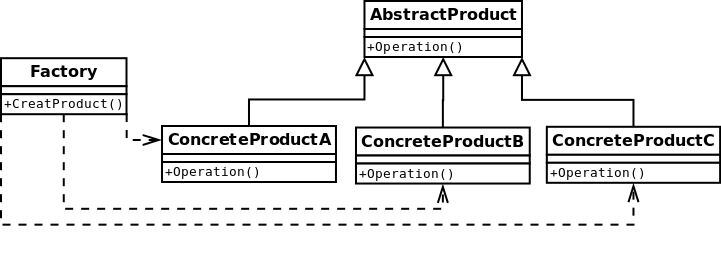
一个Factory根据传入的参数不同生产各种实例Product
Java获取不同加密算法的密钥生成器
KeyGenerator keyGen=KeyGenerator.getInstance("DESede");2. 工厂方法(Factory Method)

一个Factory有一个对应的Product
JDBC
Connection conn=DriverManager.getConnection("jdbc:microsoft:sqlserver://localhost:1433; DatabaseName=DB;user=sa;password=");
Statement statement=conn.createStatement();
ResultSet rs=statement.executeQuery("select * from UserInfo");3. 抽象工厂(Abstract Factory)
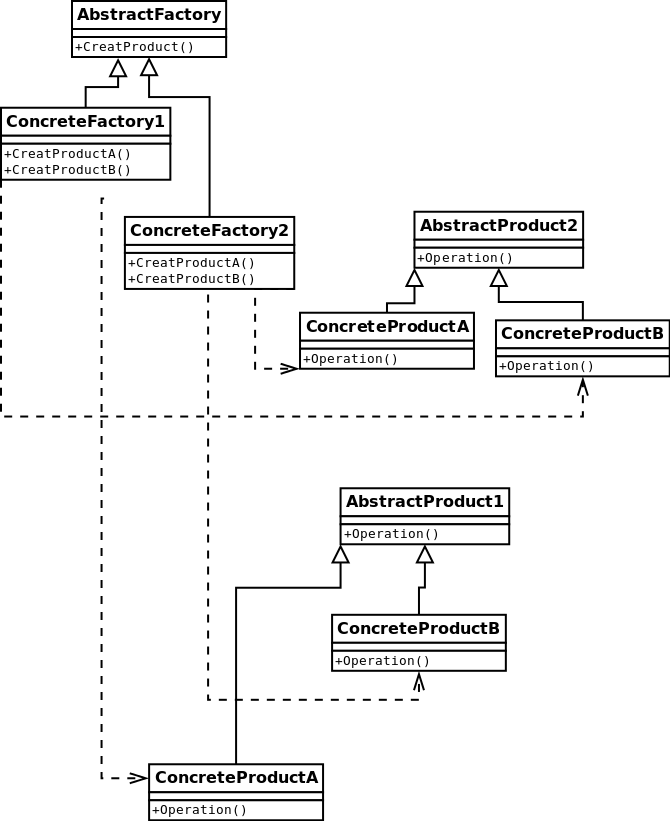
4. 建造者模式(Builder)
Builder作为抽象父类, 定义了ABC等若干的build方法
在ConcreteBuilder中实例Product, 并且实现Builder中的build方法, 留一个return Product的对外方法
由Director选取哪一种ConcreteBuilder进行build
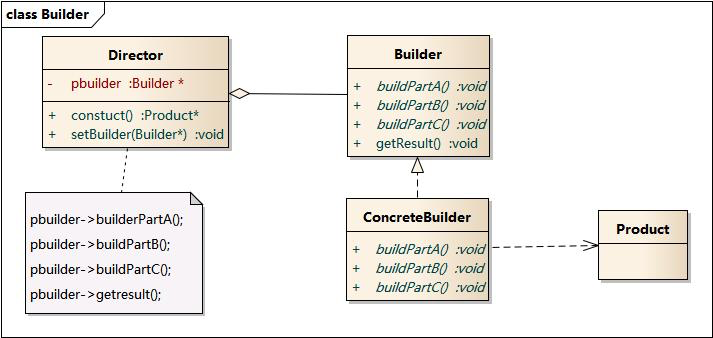
5. 单例模式(Singleton)
保证一个类只有一个实例, 并且提供一个访问该实例的全局访问点
- 任务管理器
- 回收站
- 配置文件读取
- 构造函数私有
- 靠一个get的static方法return出去一个static的成员
//
// Created by chunibyo on 2/27/20.
//
#ifndef INC_05_SINGLETON_SINGLETON_H
#define INC_05_SINGLETON_SINGLETON_H
class Singleton {
protected:
static Singleton *singleton;
Singleton() = default;
~Singleton() {
delete singleton;
}
public:
static Singleton *getInstance() {
if (singleton == nullptr) {
singleton = new Singleton();
}
return singleton;
}
};
Singleton *Singleton::singleton = nullptr;
#endif //INC_05_SINGLETON_SINGLETON_H结构型(Structural Pattern)
1. 适配器模式(Adapter)
把需要与外界交互那个接口继承下来, 再在继承下来的Adapter里面声明多个Adaptee进行交互
比如说想要调用XXuse()方法, 但是只有use()方法, 就可以在子类里面调用了
注意: C++父类使用子类方法是在父类的virtual方法情况下, 与Java不同
// Adapter.cpp
void Adapter::use() {
adaptee->specific_use();
}
Adapter::Adapter(Adaptee *adptee) {
this->adaptee = adptee;
}3. 装饰器模式(Decorator)
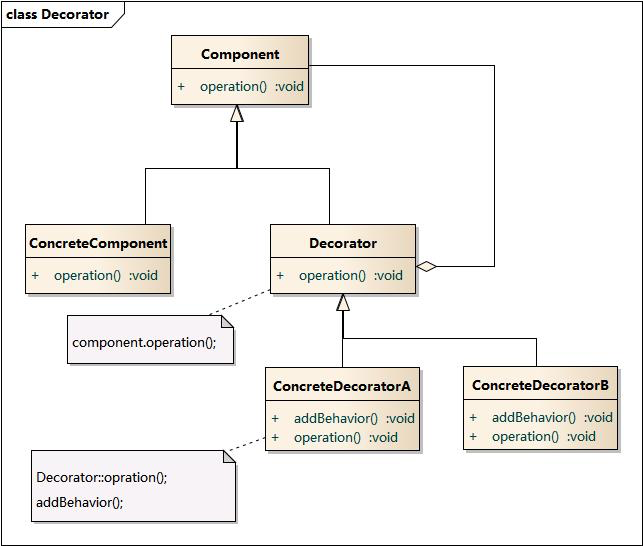
#include <iostream>
using std::cout;
using std::endl;
class Component {
public:
virtual void operation() = 0;
};
class ConcreteComponent : public Component {
public:
void operation() override {
cout << "拍照" << endl;
}
};
class Decorator : public Component {
public:
Component *component;
explicit Decorator(Component *_component) {
component = _component;
}
};
class ConcreteDecorator : public Decorator {
public:
explicit ConcreteDecorator(Component *_component) : Decorator(_component) {
}
void operation() override {
cout << "美颜" << endl;
component->operation();
}
};
int main() {
(new ConcreteComponent())->operation();
cout << endl;
(new ConcreteDecorator(new ConcreteComponent()))->operation();
}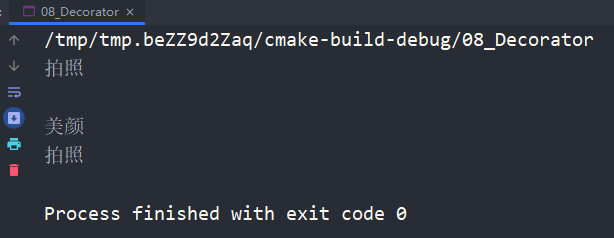
4. 外观模式(Facade)
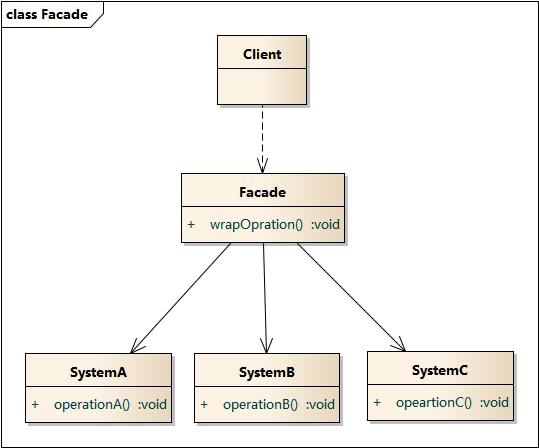
#include <iostream>
using std::cout;
using std::endl;
class system {
public:
virtual void operation() = 0;
};
class systemA : public system {
public:
void operation() override {
cout << 'A' << endl;
}
};
class systemB : public system {
public:
void operation() override {
cout << 'B' << endl;
}
};
class systemC : public system {
public:
void operation() override {
cout << 'C' << endl;
}
};
class Facade {
systemA *system_a;
systemB *system_b;
systemC *system_c;
public:
explicit Facade() {
system_a = new systemA();
system_b = new systemB();
system_c = new systemC();
}
void operation() {
system_a->operation();
system_b->operation();
system_c->operation();
}
virtual ~Facade() {
delete system_a;
delete system_b;
delete system_c;
}
};
int main() {
(new Facade())->operation();
}5. 享元模式(Flyweight)
创建一个享元工厂来负责维护一个享元池(Flyweight Pool)用于存储具有相同内部状态的享元对象。
享元模式的目的就是使用共享技术来实现大量细粒度对象的复用。
#include <iostream>
#include <unordered_map>
using std::cout;
using std::endl;
using std::string;
class Tree {
public:
string name;
explicit Tree(string name) {
cout << name << " created" << endl;
this->name = std::move(name);
}
};
class TreeFactory {
static std::unordered_map<string, Tree *> m;
public:
static Tree *getTree(const string &name) {
if (m.find(name) != m.end()) return m[name];
Tree *tree = new Tree(name);
m[name] = tree;
return tree;
}
};
std::unordered_map<string, Tree *> TreeFactory::m;
int main() {
TreeFactory::getTree("A");
TreeFactory::getTree("B");
TreeFactory::getTree("A");
}6. 代理模式(Proxy)
#include <iostream>
using std::cout;
using std::endl;
class Subject {
public:
virtual void request() {
cout << "Base" << endl;
}
};
class Proxy : public Subject {
void beforeRequest() {
cout << "before" << endl;
}
void afterRequest() {
cout << "after" << endl;
}
Subject *subject;
public:
void request() override {
beforeRequest();
subject->request();
afterRequest();
}
Proxy() {
subject = new Subject();
}
};
int main() {
(new Proxy())->request();
}行为模式(Behavioral Pattern)
1. 命令模式(Command)
将命令封装成对象
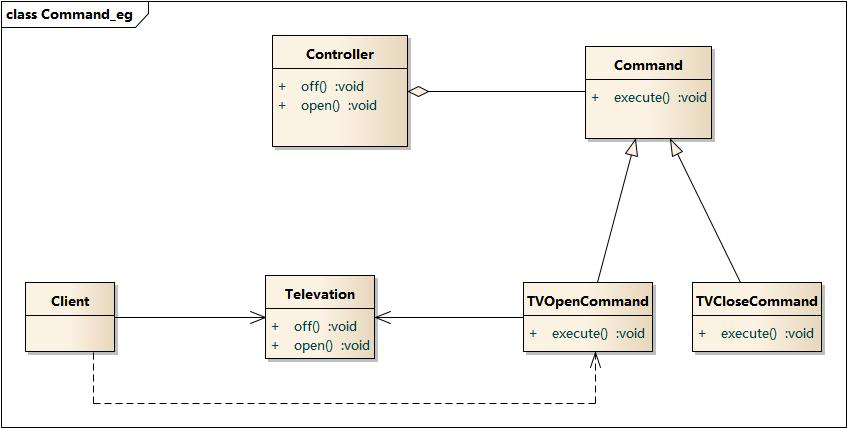
#include<iostream>
using std::cout;
using std::endl;
class Receiver {
public:
void action() {
cout << "Receiver Action" << endl;
}
};
class Command {
protected:
Receiver *receiver{};
public:
virtual void setReceiver(Receiver *_receiver) {
receiver = _receiver;
}
virtual void execute() = 0;
};
class ConcreteCommand : public Command {
public:
void execute() override {
cout << "Command Execute" << endl;
receiver->action();
}
};
class Invoker {
Command *command;
public:
explicit Invoker(Command *_command) {
command = _command;
}
void call() {
cout << "Command Invoke" << endl;
command->execute();
}
};
int main() {
Command *cmd = new ConcreteCommand();
cmd->setReceiver(new Receiver());
(new Invoker(cmd))->call();
}